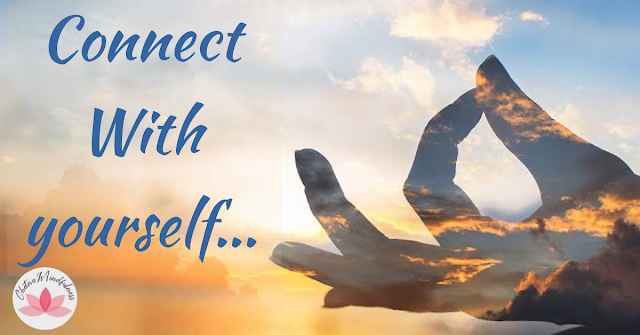Be Kind
♥️♥️Kindness is the state of caring about other people’s well-being and taking action to help make other people’s lives better and happier.
We can define kindness as the quality of being friendly, generous, and considerate. Affection, gentleness, warmth, concern, is some of the caring words that are associated with kindness. While kindness has a connotation of meaning someone is naive or weak, that is not the case. Being kind often requires courage and strength. Kindness is an interpersonal skill.
It is social glue that allows us to connect with others and build meaningful relationships with them. When someone does something kind for us, we like them more and we want to cooperate with them more.
When we do something kind for someone, we earn their trust and respect, and we feel better about ourselves for being a good person. Kindness is a reciprocal relationship. It becomes a cycle that strengthens our bond with friends, family, lovers, co-workers, and acquaintances.
The more we practice kindness, the easier it is. Every thought and action we do fires neurones in our brain. The more these neural pathways are fired, the easier it becomes to activate them. So the more we repeat acts of kindness, the easier it is to do them in the future.
There are many ways to be kind and many opportunities to practice. Perhaps kindness is a value that could add more satisfaction to and strengthen your relationships.
Here are scientifically supported ways we can increase our kindness toward others. There are different ways to practice kindness.
💗One way to be kind is to open your eyes and be active when you see people in need.
Do you notice when people need a helping hand?
💗Opening your eyes means noticing when others are suffering.
💗A kind word, a smile, opening a door, or helping carry a heavy load can all be acts of kindness.
💗Celebrating someone you love, giving honest compliments, sending an email thanking someone, telling someone how s/he is special to you, helping an elderly neighbour with hard work or food, taking a photo of someone and sending it to the person, sharing homemade food, refusing to gossip, and donating old clothing and things you don't need are all ideas about how to practice kindness.
💗Gottman's work shows that your response to someone's successes may determine more about your relationship than how you respond when times are difficult. Kindness is a willingness to full-heartedly celebrate someone else's successes..
💗Kindness is to be openly happy for the other person.
💗Kindness is also about telling the truth in a gentle way when doing so is helpful to the other person. The courage to give and receive truthful feedback is a key component of growth and flexible thinking.
💗Kindness includes being kind to yourself.
💗Do you treat yourself kindly?
💗Do you speak gently and kindly to yourself and take good care of yourself?
💗Get your intentions right
Having good intentions is the first step toward being kinder toward others and building positive relationships with them.
💗Cultivating the right attitude about others is often necessary before we start acting in kinder ways.
If we approach the world with a cynical mindset, people are going to notice that and not want to be around us. But if we approach the world with a positive and optimistic mindset, people are going to be attracted to that and would want to spend more time with us.
💗In a small but significant way, people with good intentions make the world a better place.
💗See from the other person’s perspective, We can increase empathy and kindness toward others with the practice of perspective-taking.
💗The aim of this technique is to imagine ourselves experiencing a situation from another person’s perspective.
🔥How would you feel if you were them?
🔥What thoughts would you have?
🔥How would you act if you were in their shoes?
By answering these questions, we can gain a deeper understanding of why people act the way they do.
💗Perspective-taking helps us step out of our narrow mind and see the world through the lens of another conscious being.
💗And by understanding people better we learn to interact with them better, be nicer to them, and even forgive them when they do things we normally wouldn’t understand.
💗Practice kindness in small doses
💗Kindness starts as a thought but ends as an action.
💗Acting kindly toward others is the only real way to let people know we care about them and their happiness.
💗 Without action, kindness just lives in our minds but never touches the real world.
💗Being kind to others doesn’t have to be complex or fancy.
💗Sometimes the simplest acts of kindness are seen as the most sincere, such as holding the door, helping with directions, saying “please” and “thank you,” or even just a smile.
💗Kindness is like a muscle; the more we exercise it the better we are at it.
💗Pause when you get angry or frustrated
💗An important part of being a kind person knows how to control our anger and frustration.
💗It’s natural for us to occasionally be upset with other people; however, we should try our best to channel these emotions in constructive ways, not lash out, yell, insult, or be aggressive.
💗Often by creating a “pause” between our thoughts and actions, we can re-evaluate what we’re doing in the moment and change our direction if we find ourselves wanting to do something stupid or destructive.
💗so when someone pisses you off and you want to yell at them, take a mental “step back” – breathe a few deep breaths – and then focus back on the situation with a clear mind.
Recent research in neuroscience has showed that above practices can leave long-lasting changes in the brain if practiced on a regular basis.
For more valuable insight please keep reading my blog.....



Comments
Post a Comment